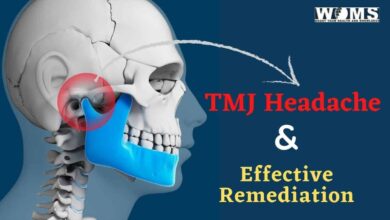
Trench mouth: What is it? How to get rid of it?
Dental problems are not a new problem for us as we have faced it many times in our lives. It might be a decayed tooth or gingivitis. Trench mouth is one of the serious and painful dental problems. It is caused when there is no proper care and treatment given to the bleeding gums. It is an advanced form of gingivitis.
What is a trench mouth?
It is a common and non-contagious disease of gums. It is marked by the symptoms like bleeding gums, swelling, or ulcers between teeth and can lead to necrotizing gums as well. There is a great possibility for the death of gums in this disease so due to this, it is regarded as an advance and serious form of gingivitis.
Trench mouth and World War I
This disease was reported at 4th BC. The term “trench mouth” came into use since it was seen in soldiers in the battlefield trenches of world war 1. They had poor oral hygiene and were going under a lot of psychological stress and had poor diet too which ultimately resulted in severe infection of gums. But now term like Necrotizing ulcerative gingivitis or necrotizing ulcerative periodontitis, Vincent stomatitis or acute necrotizing ulcerative gingivitis is used instead.
Signs and symptoms:
Some signs and symptoms are seen at the early stage of the infection while some signs and symptoms are already present in some cases.
- Severe gum pain
- Ulcers of the papillae( the small projections of skin between the teeth)
- Death of gum tissue
- Bleeding gum
- Foul bad breath
Causes:
It is caused by mixed anaerobic bacteria like P. intermedia and Fusobacterium as well as spirochetes, such as Treponema. It also occurs in a person with a compromised immune system like in a person suffering from HIV/AIDS.
Predisposing factors of trench mouth:
They are the factors that will eventually lead to trench mouth if not taken care of it at the right time. The predisposing factors are:
- Poor oral hygiene
- Smoking
- Inadequate nutrition
- Psychological stress
- Immuno-compromised person (HIV/AIDS)
How common is it?
Trench mouth is not common but affects a 0.1-1% population. In the individual suffering from HIV/AIDS, they suffer from it as well. In countries where places are lacking poor hygiene in such places, it is seen in more. It also occurs in the individual having poor oral hygiene. It is seen affecting the age group of 18-30 mostly. In younger males, it is seen due to their reluctant habit to seek treatment until it becomes unbearable.
Exams And Tests:
The dental practitioner will look for these signs in your mouth which include:
- Ulcers which is filled with plaque and food debris
- Destruction of gum tissue around the teeth
- Inflammation or bleeding gums
There may be fever and the presence of swollen lymph nodes in the head and neck in some cases.
X-rays or dental x-rays are taken of the face to know how severe is the infection and how much tissue has been destroyed by the infection as well.
Throat swab culture may be used for testing this disease to see the presence of the bacteria causing it.
Treatment of trench mouth:
Treatment of trench mouth occurs in the following four stages.
First stage:
It includes the procedure to stop the progression of the disease and to eliminate the discomfort and pain. The procedure is done for the removal of dead tissue from affected areas. It is done by using an ultrasonic instrument or with the help of chemical agents. Oral antibiotics and pain killers are used in case the patient has a weak immune system or if there is fever or swollen glands.
Second stage:
If gingivitis is present it is treated first in this stage. Cleaning of teeth and gums is done by scaling or root planing of the teeth. The patient is also instructed about good oral hygiene practices and nutritional food intake. The patient is encouraged to quit harmful smoking habit and is recommended to take enough sleep. Similarly. Antibacterial mouthwash is prescribed for use twice daily.
Third stage:
Surgical procedures are used in the third stage. In this procedure, gum surgery is done in the necessary place to fill craters between teeth.
Fourth stage:
Maintenance and support is the goal of this stage. In this stage, monitoring is done on a long term basis to look into whether the patient has been practising good oral hygiene or not. Similarly, to look at whether the factors which cause disease are in control or not.
Associated complication :
If treatment is not done then it may destroy gum tissue. By the destruction of gums, it can spread into local tissues such as the cheeks, lips, or bones of the jaw.
After surgery it is a must to correct the craters by gum surgery otherwise it will lead to teeth loss.
Sometimes the treatment fails too and the common reasons for the failure of treatment include:
- Unable to remove the root cause of the infection and thereby the re-occurrence occurs.
- Incomplete removal of dead or diseased tissue
- No proper diagnosis of the disease
- Patient not following the instructions as instructed by dental hygienists
- Presences of underlying medical issues
Prevention
The following preventive measures should be taken to reduce our chances of suffering from the disease. They include:
- Intake of nutritious food
- Good health
- Good oral hygiene
- Managing stress and coping with it
- Regular dental check-ups
- Quitting smoking
Takeaway:
It is a serious oral health problem. It is not common in developed countries due to access to preventive care. But it is an issue in developing nations due to lack of oral care hygiene and unavailability of such treatments.
The best prevention for this disease is to make sure to take care of our teeth and gums by regularly brushing and flossing. We must always remember to see our dentist twice a year. If we see our dentist then we can identify the disease and get the treatment as soon as possible without getting the condition worse.




